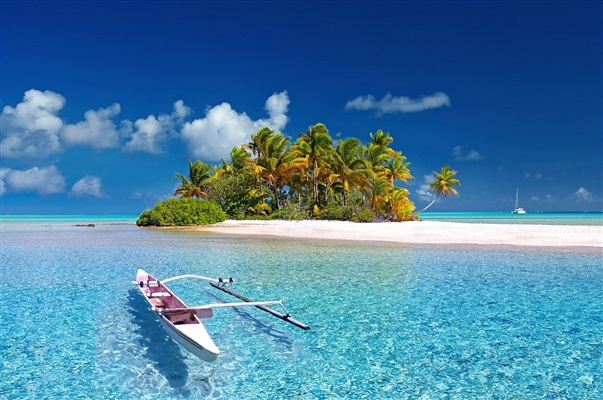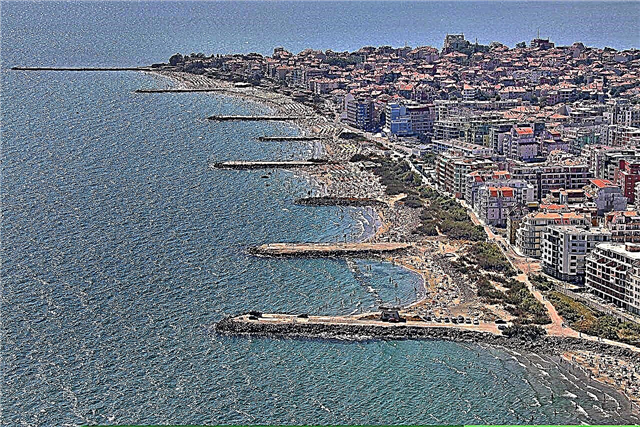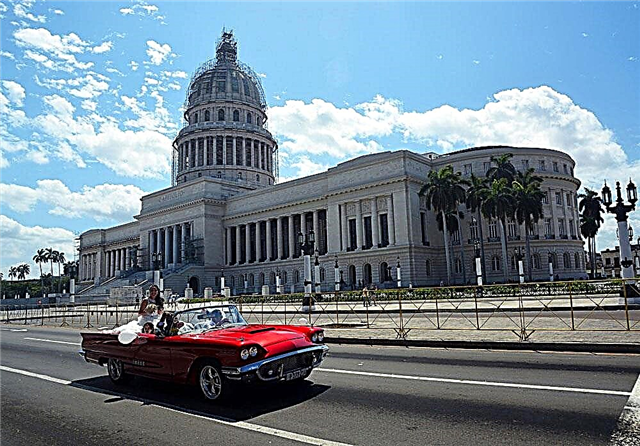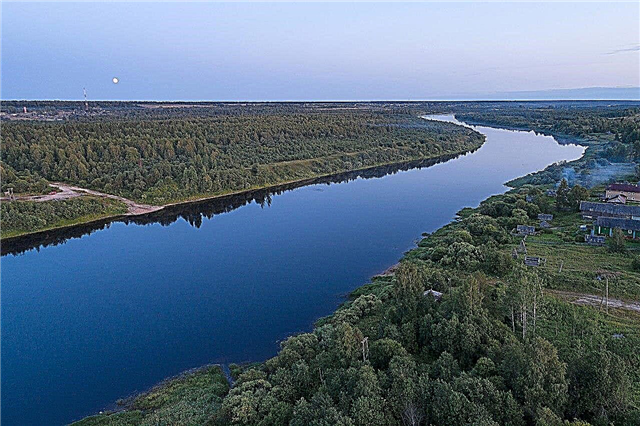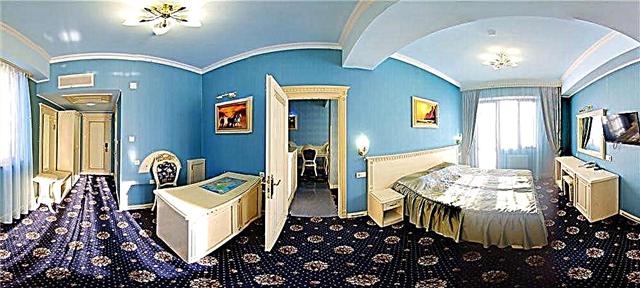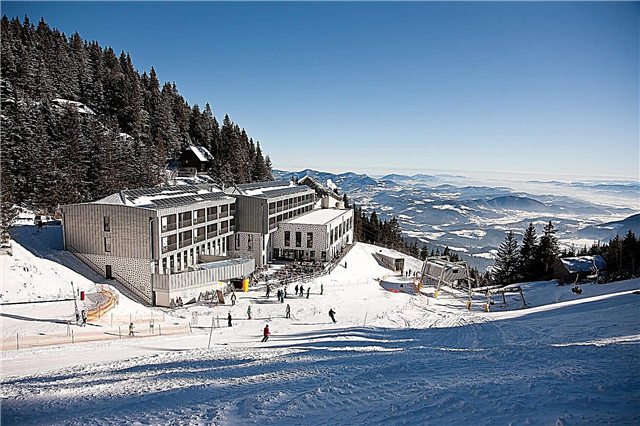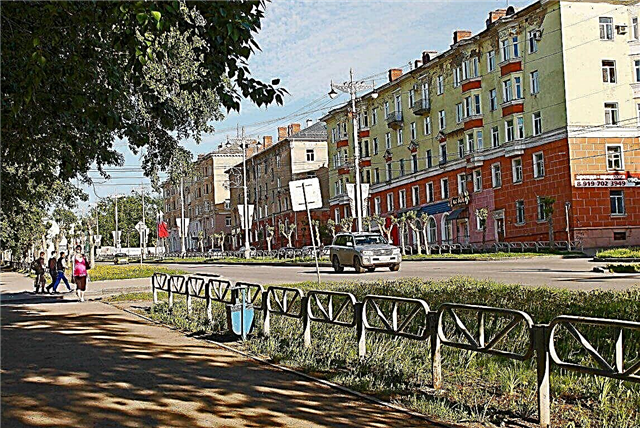The Perm Territory is one of the most economically developed regions of Russia. The main sectors of the economy are the petrochemical industry and mechanical engineering. The age of the first settlements on the territory of the Perm Territory is estimated at tens of thousands of years. The development of heavy industry during the Soviet period gave a powerful impetus to the growth of cities.
Thanks to the rich deposits of oil, many oil refineries and machine-building plants were founded on the territory of the Perm Territory. This is what made it possible to accelerate urbanization and develop the culture of cities. There are many museums, theaters, galleries and other art objects in the settlements of the Perm Territory. A large number of local attractions are dedicated to the history of the emergence of cities.
The largest cities of the Perm region
List of the largest cities in terms of population in the region.
Permian
The city is the center of the Perm region. Initially, Perm was founded to develop copper and silver mining in the Urals. The city has a large number of parks, squares and architectural installations. Thanks to the developed industry, a large amount of money is invested in the development of the culture of Perm. New theaters and art galleries are opening, and numerous festivals are held. The Perm State Circus is located in the central part of the city.
Population - 1,055,397 people (2020).

Berezniki
The first settlements on the site of the modern city were founded in the middle of the 16th century. Today the city is one of the developed centers of the Perm Territory, despite its small population. The basis of the economy is made up of enterprises of the chemical industry. Due to the high level of development of the city, the social infrastructure is well developed in Berezniki, branches of the leading universities of the Urals have been opened.
Population - 141 thousand people.

Solikamsk
In the 15th century, Vologda merchants began mining salt on the site of a modern city. Later, a working settlement appeared here, and then a large city. The volume of production grew annually, and today the city is called the salt capital of Russia. Solikamsk is home to a large number of architectural landmarks. The most famous are the churches built in the 17th-18th centuries. Memorials dedicated to the heroes of the Great Patriotic War are located throughout the city.
Population - 93 thousand people.

Tchaikovsky
The city was established in 1955. Its main purpose was to provide housing for the builders of the Votkinsk hydroelectric power station. Tchaikovsky developed rapidly in the 20th century. Today, there are a large number of concert halls here. Also, music and choreographic festivals are regularly held in Tchaikovsky. They are attended by creative teams not only from neighboring regions, but also from neighboring countries.
Population - 82.5 thousand people.

Kungur
The city was founded in the second half of the 17th century. Soon Kungur developed, a stone Kremlin was built. Today, there are a large number of historical museums and reserves here. Ancient landforms and relict plants have been preserved in the protected areas. The museums are associated with archaeological finds made on the territory of the Perm Territory and associated with local sites of primitive people.
Population - 65 thousand people.

Lysva
In 1785, a cast iron factory was founded on the site of the modern city. In 1787 a workers' settlement was formed next to it. One of the main attractions of Lysva is the Savin Drama Theater. It is one of several professional theaters in the Perm region. Also in Lysva there is a large number of libraries with a large book fund.
Population - 61 thousand people.

Krasnokamsk
The basis of the city's economy is the Kamsky Pulp and Paper Mill. It was founded in 1929, at the same time Krasnokamsk appeared. In the middle of the 20th century, an oil refinery was founded in the city. One of the tourist attractions of Krasnokamsk is a pine forest with a large beach. Every year a large number of people come here on vacation.
Population - 53 thousand people.

Chusovoy
The city was founded during the reign of Ivan the Terrible. Nowadays, a large metallurgical plant is located here. There are few historical architectural monuments preserved in Chusovoy. Most of the buildings date back to the 20th century. Every summer the city attracts thousands of tourists with its nature and picturesque landscapes of the Ural Mountains. There is also a large ski base near Chusovoy.
Population - 44 thousand people.

Dobryanka
The village on the site of the modern city existed in the 18th century. The settlement received the status of a city only in 1943. The most developed industries are woodworking and oil refining. The main leisure centers of Dobryanka are the houses of culture. The city houses a museum with a large collection of historical finds made in the Perm region.
Population - 32 thousand people.

Nigella
One of the southernmost settlements of the Perm Territory was founded in 1854. Nowadays, a large number of hotels, cafes and restaurants are located here. The main centers of creative activity in the city are the local history museum and library. Most of the cultural events and festivals take place here. Also, many tourists come to Chernushka for their summer holidays. They are attracted by the picturesque nature of the Urals and equipped recreation centers.
Population - 33 thousand people.

Kudymkar
The first written records of the city date back to the second half of the 16th century. Kudymkar was one of the largest regional centers, but with the development of industry in other cities it lost its significance. Nowadays, there are several Orthodox churches, a theater and a museum of local lore. The museum contains exhibits related to the history of Kudymkar and the Perm region as a whole.
Population - 31 thousand people.

Vereshchagino
The city was created in 1898 and owes its appearance to the Trans-Siberian Railway. The name was given to the city in 1916. It is dedicated to the battle painter Vereshchagin, who stayed here during his trip to the Far East, to the Russo-Japanese War. The city has a large number of monuments dedicated to the Great Patriotic War, the Civil War and the Trans-Siberian Railway.
Population - 21.5 thousand people.

Wasp
The city was founded at the end of the 16th century and was an important stronghold in the defense of the eastern borders of the Russian state. Until the middle of the 20th century, the economy of the Wasp was based on agriculture and woodworking. In the 60s of the XX century, the development of a large oil field began here. Today, Osa has preserved many architectural monuments, including ancient temples, a theater and a shopping arcade.
Population - 21 thousand people.

Lipakha
The city was founded in 1755 near an iron ore deposit. Gubakha became an important transport hub for metal transportation. Nowadays, the main attraction of the city is Mount Krestovaya. Its height reaches 470 meters. On the slope of Krestovaya there is a ski resort, and the mountain itself is a geological monument of the region. Not far from Gubakha is the Stone Town, which is also a natural monument and attracts many tourists.
Population - 19.5 thousand people.

Nytva
The city was founded in the second half of the 18th century as a settlement next to a copper smelter. Nowadays, a modern metallurgical plant is located in Nytva. Livestock breeding is also developed in the city; a railway has been laid through the settlement.The main attractions of Nytva are the city museum of local lore, a temple and a pond excavated in the middle of the 17th century.
Population - 18.5 thousand people.

Krasnovishersk
The northernmost city of the Perm Territory was founded in 1894 as a settlement for workers of a metallurgical plant. Later, in the 30s of the XX century, the construction of a pulp and paper mill began here. It was carried out by the inmates of labor camps. The most famous of them is Varlam Shalamov. He worked at this construction site along with thousands of other prisoners of the Gulag. Nowadays, a memorial dedicated to the writer has been opened in Krasnosvishersk.
Population - 15 thousand people.

Kizel
In the second half of the 18th century, rich deposits of iron ore were discovered on the site of the modern city. Soon a metallurgical plant was built here, and a working village was formed next to it. In 1926 Kizel received city status. Large industries and geological natural monuments are located here. There are several caves near Kizel that attract speleologists and tourists.
Population - 14 thousand people.

Ocher
Ostrog, located near the modern city, was founded in the middle of the 16th century. Its main task was to defend the eastern borders of the Russian state. The modern Ocher was founded in 1759. It was a residential settlement for workers in iron and iron factories. The Ocherskaya HPP is located on the Kama River, which supplies the city with electricity. A large pond has been dug in the city, next to which a park is laid out.
Population - 14 thousand people.

Alexandrovsk
The city was created at the beginning of the 19th century, next to a large metallurgical plant. Later, an engineering plant was also built here. Aleksandrovsk developed precisely thanks to these industrial enterprises. One of the oldest Ural schools is located in the city, which trains workers in mechanical engineering and metallurgy. Also in Aleksandrovsk, the Palace of Culture was built with a concert hall that can accommodate up to 700 spectators.
Population - 12 thousand people.

Gornozavodsk
The first mention of the settlement on the site of the city dates back to the middle of the 19th century. Modern Gornozavodsk was founded in 1947 as a working settlement for concrete plant builders. There are several leisure centers here. Among them are a ballet theater, a museum of local lore and a city house of culture. Also in Gornozavodsk there are several sports schools and a tourist club that organizes trips around the city.
Population - 11 thousand people.

Gremyachinsk
The city was founded in 1949 thanks to the unification of workers' settlements and the local station settlement. Gremyachinsk was formed thanks to the development of coal mining at a nearby deposit. Nowadays, there are several schools and a college operating here. All of them have a construction or mining focus. The center of public life in Gremyachinsk is the city house of culture.
Population - 8.5 thousand people.

Okhansk
The first mention of the settlement on the site of the modern city dates back to 1597. Okhansk got its name from a tackle used by local fishermen called "ohan". Fishing is also reflected in the city's coat of arms, which depicts various tackles. The biological station of the Perm University is located in Okhansk. The study of aquatic species inhabiting the Ochersky Bay is carried out here.
Population - 7 thousand people.

Usolye
The city was founded in 1606 and got its name from the developed salt mining. Already in the 19th century, several dozen salt mines were located here. Nowadays, many architectural monuments have been preserved here. Most of them were built by the Stroganov merchants who owned the local salt fields. Several chambers, a temple, and other buildings that have survived to this day were built here.
Population - 6.5 thousand people.

Cherdyn
The year of the city's foundation has not yet been precisely determined. The first mention of it dates back to 1451. Cherdyn is one of the most ancient cities based in the Urals. It reaches its greatest prosperity during the period of confrontation between the Russian state and the Kazan Khanate. Several stone buildings have survived here today, including the Church of St. John the Evangelist. Also in Cherdyn there is a large museum of local lore.
Population - 4.5 thousand people.

Chermoz
The city was founded quite late, in comparison with other cities of Russia and the Russian Empire. This is due to the fact that near in the Chermoz area for a long time the ushkuiniks, the Ural river pirates, made their raids. Later, the city was transferred to the possession of the Stroganov merchants. The main attractions of Chermoz are the Church of the Nativity of the Blessed Virgin Mary, the city park and the dam built on the local pond.
Population - 3.5 thousand people.


